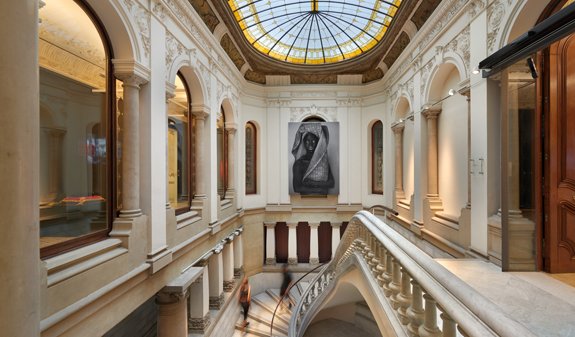In a bold move that confronts the ever-present specter of censorship and cancel culture, Barcelona welcomes an unprecedented new museum today. The Museu de l’Art Prohibit (Museum of Prohibited Art) is opening its doors to the public on October 26, 2023. It showcases over two hundred works facing censorship, bans, and other forms of suppression. This museum is not just a celebration of art but a defiance of those who seek to silence it.
A journey from censorship to celebration
The Museu de l’Art Prohibit is the brainchild of the collector, journalist, and entrepreneur, Tatxo Benet. Its story began during the ARCO 2018 edition when Benet acquired an artwork by the artist Santiago Sierra titled “Presos Políticos en la España Contemporánea” (Political Prisoners in Contemporary Spain). However, as soon as the piece was acquired, it was promptly removed from the gallery that sold it, due to its controversial theme. This incident laid the foundation for what would become a unique and powerful collection.
Over the course of five years, Benet tirelessly accumulated nearly 200 artworks that had been subjected to censorship, bans, or denounced for political, social, or religious reasons, effectively creating the world’s first and only museum dedicated to this genre of art. The collection includes pieces from legendary artists like Francisco de Goya, Gustav Klimt, Andy Warhol, and Pablo Picasso, as well as contemporary artists such as Zoulikha Bouabdellah, Amina Benbouchta, and Charo Corrales.

A unique offering for the world
The Museu de l’Art Prohibit’s mission goes beyond displaying censored art; it aims to restore our ability to experience the artworks that were once withdrawn from public view. The museum is housed within the enchanting Casa Garriga Nogués, an architectural masterpiece by Enric Sagnier i Villavecchia, built between 1899 and 1901. This setting provides an intimate backdrop that allows visitors to truly immerse themselves in the art.
Spanning over 2,000 square meters, the museum offers an immersive journey that delves into both the scandalous essence of the exhibited collection and its ironic, contemplative, incisive, liberating, critical, and empowering facets. The use of digital tools enhances the visitor experience, expanding the boundaries of the gallery walls and inviting guests to explore instances of censorship as if traversing a virtual museum.
Art reflects & shapes society
Art reflects the diversity of human experiences, beliefs, and perspectives. Censoring art not only curtails individual liberties but also limits society’s capacity for growth and change.
Censorship leads to a homogenized culture that lacks diversity and artistic richness. It restricts the free flow of information and ideas, preventing people from learning about different cultures, experiences, and perspectives. In a world where we need to understand and respect one another more than ever, art can serve as a bridge, promoting empathy and tolerance.
Forbidden Art Awaits
In a world where censorship and blacklisting often threatens to extinguish diverse voices, the Museu de l’Art Prohibit stands as a testament to the enduring power of art to transcend censorship, celebrate freedom of expression, and challenge the status quo. Each artwork tells a story of defiance against the forces that tried to silence it, offering visitors a glimpse into the power of artistic expression.



Thank you for reading and sharing stories of art & creativity on FrikiFish! This platform is an ad-free, one-woman labor of love, providing free content and services to artists, art-lovers and creative projects in Barcelona. If these pages enrich your life in any way, please consider supporting with a donation or a cup of coffee. Thank you!